How to Build a Sales Pipeline That Converts 30% More Leads
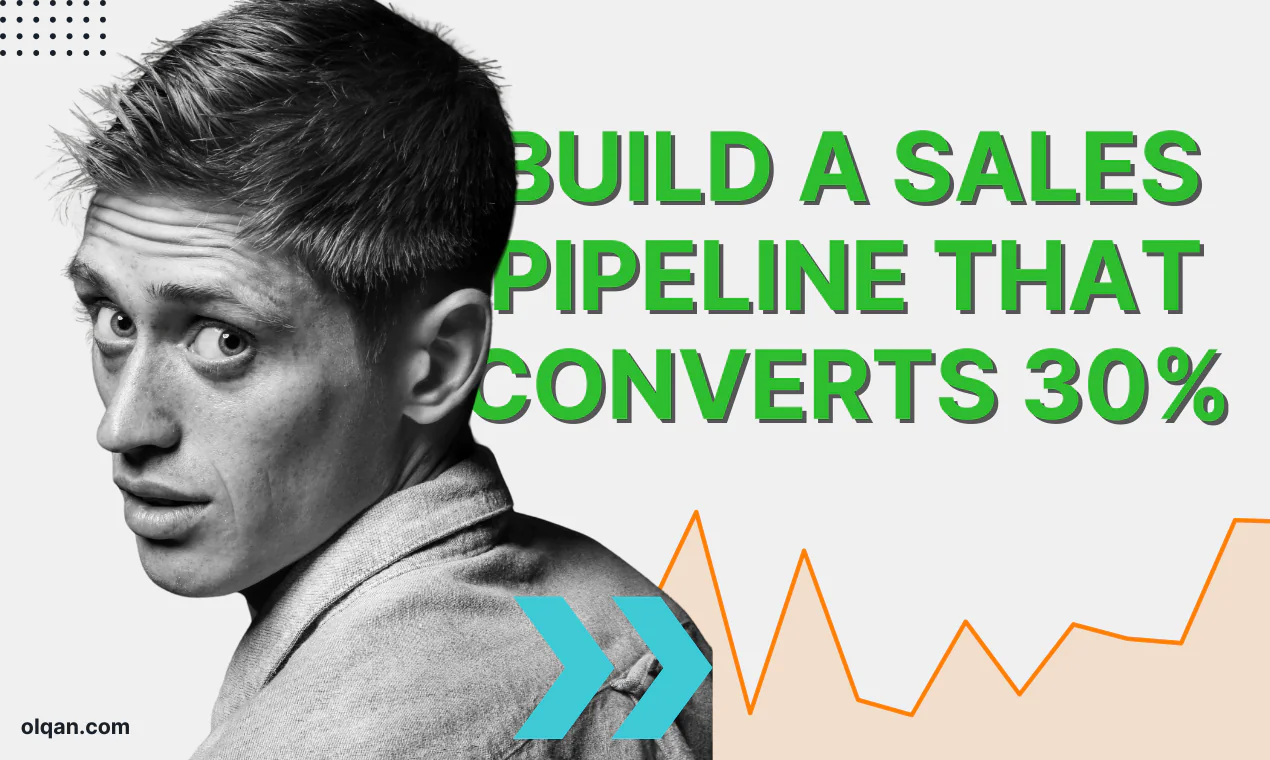
Your sales pipeline is either your business’s growth engine or its biggest bottleneck. There’s no middle ground.
If you’re a business owner, founder, or sales manager watching qualified leads slip through the cracks, you’re not alone. Many companies struggle with undefined sales processes, while businesses with well-structured sales pipelines typically see significantly higher conversion rates.
The difference between businesses that consistently hit their sales targets and those that struggle month after month often comes down to one thing: a systematically designed sales pipeline that guides prospects from initial interest to closed deals.
Ready to transform your sales process? Discover how Olqan’s Sales Hub helps growing businesses build and optimize high-converting sales pipelines with integrated CRM, automation, and analytics.
In this comprehensive guide, you’ll learn how to build a sales pipeline that doesn’t just organize your prospects but it actively converts them. We’ll cover the psychology behind effective pipeline stages, proven optimization strategies, and the tools and metrics that turn your sales process into a predictable revenue machine.
Why Most Sales Pipelines Fail (And How Yours Will Succeed)
Before we dive into building your sales pipeline template, let’s understand why so many sales processes fail to deliver results.
Common Pipeline Problems:
- Unclear stage definitions – Teams don’t know what each stage means
- Too many or too few stages – Oversimplified or overcomplicated process
- No qualification criteria – Unqualified leads clog the pipeline
- Inconsistent follow-up – Prospects fall through the cracks
- Poor data tracking – No visibility into what’s working
- Lack of automation – Manual processes create delays and errors
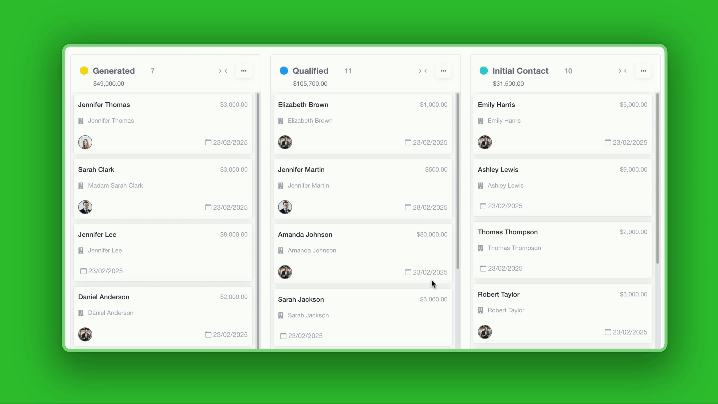
The Cost of Poor Pipeline Management:
- Companies lose an average of 27% of potential deals due to poor follow-up
- 79% of marketing leads never convert due to lack of lead nurturing
- Sales teams waste 40% of their time on unqualified prospects
- Poor pipeline visibility leads to inaccurate forecasting and missed targets
But here’s the opportunity: Businesses with well-defined sales pipelines see:
- 30% higher conversion rates from lead to customer
- 18% faster sales cycles due to clear processes
- 28% more accurate sales forecasting
- 40% improvement in sales team productivity
The Anatomy of a High-Converting Sales Pipeline
A successful sales pipeline isn’t just a list of stages—it’s a systematic approach to moving prospects through a logical progression toward purchase. Let’s break down the essential components.
The 7-Stage High-Converting Pipeline Framework
Stage 1: Lead Generation (100% of Pipeline)
Purpose: to enhance the entire sales process and attract and capture potential customers
Key Activities: Marketing campaigns, referrals, networking, inbound leads
Success Criteria: Contact information captured, initial interest confirmed
Average Conversion Rate: 100% to 15-25% (Stage 2)
Optimization Strategies:
- Define your ideal customer profile clearly
- Use multiple lead sources to reduce dependency
- Implement lead scoring to prioritize follow-up
- Track lead source performance to optimize marketing spend
Stage 2: Initial Qualification (15-25% of Original Leads)
Purpose: Determine if prospect fits your ideal customer profile
Key Activities: Discovery calls, needs assessment, budget qualification
Success Criteria: BANT criteria met (Budget, Authority, Need, Timeline)
Average Conversion Rate: 15-25% to 40-60% (Stage 3)
BANT Qualification Framework:
- Budget: Do they have financial resources?
- Authority: Can they make purchasing decisions?
- Need: Do they have a problem you can solve?
- Timeline: When do they need a solution?
Stage 3: Needs Discovery (40-60% of Qualified Leads)
Purpose: Deeply understand prospect’s challenges and requirements to optimize your sales efforts.
Key Activities: Detailed discovery calls, stakeholder meetings, needs analysis
Success Criteria: Pain points identified, solution requirements defined
Average Conversion Rate: 40-60% to 60-80% (Stage 4)
Discovery Best Practices:
- Ask open-ended questions to uncover real problems
- Listen more than you talk (aim for 70/30 ratio)
- Identify all stakeholders involved in decision-making
- Understand current solutions and their limitations
- Quantify the impact of their problems
Power Questions for Discovery:
- “What’s driving you to look for a solution now?”
- “What happens if you don’t solve this problem?”
- “How are you currently handling this challenge?”
- “What would success look like for you?”
- “Who else is involved in this decision?”
Stage 4: Solution Presentation (60-80% of Discovery Qualified)
Purpose: Present tailored solution that addresses identified needs
Key Activities: Demos, proposals, presentations, proof of concepts
Success Criteria: Solution fit confirmed, value proposition accepted
Average Conversion Rate: 60-80% to 40-50% (Stage 5)
Presentation Success Factors:
- Customize every presentation to specific needs
- Focus on outcomes, not features
- Address potential objections proactively
- Include specific ROI calculations
- Provide social proof and case studies
Stage 5: Proposal and Negotiation (40-50% of Presentations)
Purpose: Formalize offer and address final concerns
Key Activities: Proposal delivery, pricing discussions, contract terms
Success Criteria: Proposal submitted, negotiations progressing
Average Conversion Rate: 40-50% to 70-85% (Stage 6)
Negotiation Strategies:
- Present multiple options (good, better, best)
- Anchor with value, not price
- Understand their decision-making process
- Set clear next steps and deadlines
- Prepare for common objections
Stage 6: Closing (70-85% of Proposals)
Purpose: Secure final commitment and complete the sale
Key Activities: Contract signing, final approvals, payment processing
Success Criteria: Signed contract, payment terms agreed
Average Conversion Rate: 70-85% to 100% (Stage 7)
Closing Best Practices:
- Assume the sale throughout the process
- Make it easy to say yes with simple contracts
- Address last-minute concerns quickly
- Provide clear implementation timelines
- Celebrate the decision with the customer
Stage 7: Customer Success and Expansion (100% of Closed Deals)
Purpose: Ensure successful implementation and identify expansion opportunities to build a pipeline for various sales.
Key Activities: Onboarding, training, check-ins, upselling
Success Criteria: Customer satisfaction achieved, expansion opportunities identified Average Conversion Rate: 20-40% expansion rate
Post-Sale Optimization:
- Structured onboarding process ensures quick value realization
- Regular check-ins identify issues before they become problems
- Success metrics tracking proves ROI and builds expansion case
- Referral programs turn satisfied customers into lead sources
🚀 End-to-End Pipeline Management: Olqan’s CRM platform manages every stage from lead capture to customer success with automated workflows, deal tracking, and expansion opportunity identification.
Advanced Pipeline Optimization Strategies
Now that you understand the framework, let’s explore advanced strategies that separate high-performing sales teams from the rest.
Strategy 1: Implement Dynamic Lead Scoring
Not all leads are created equal. Dynamic lead scoring helps you prioritize follow-up based on likelihood to convert.
Lead Scoring Factors:
Demographic Scoring (30% weight):
- Company size and revenue
- Industry and role
- Geographic location
- Technology stack
Behavioral Scoring (50% weight):
- Website pages visited
- Content downloaded
- Email engagement rates
- Demo requests and form submissions
Engagement Scoring (20% weight):
- Sales conversation quality
- Response time to communications
- Meeting attendance and participation
- Referral source quality
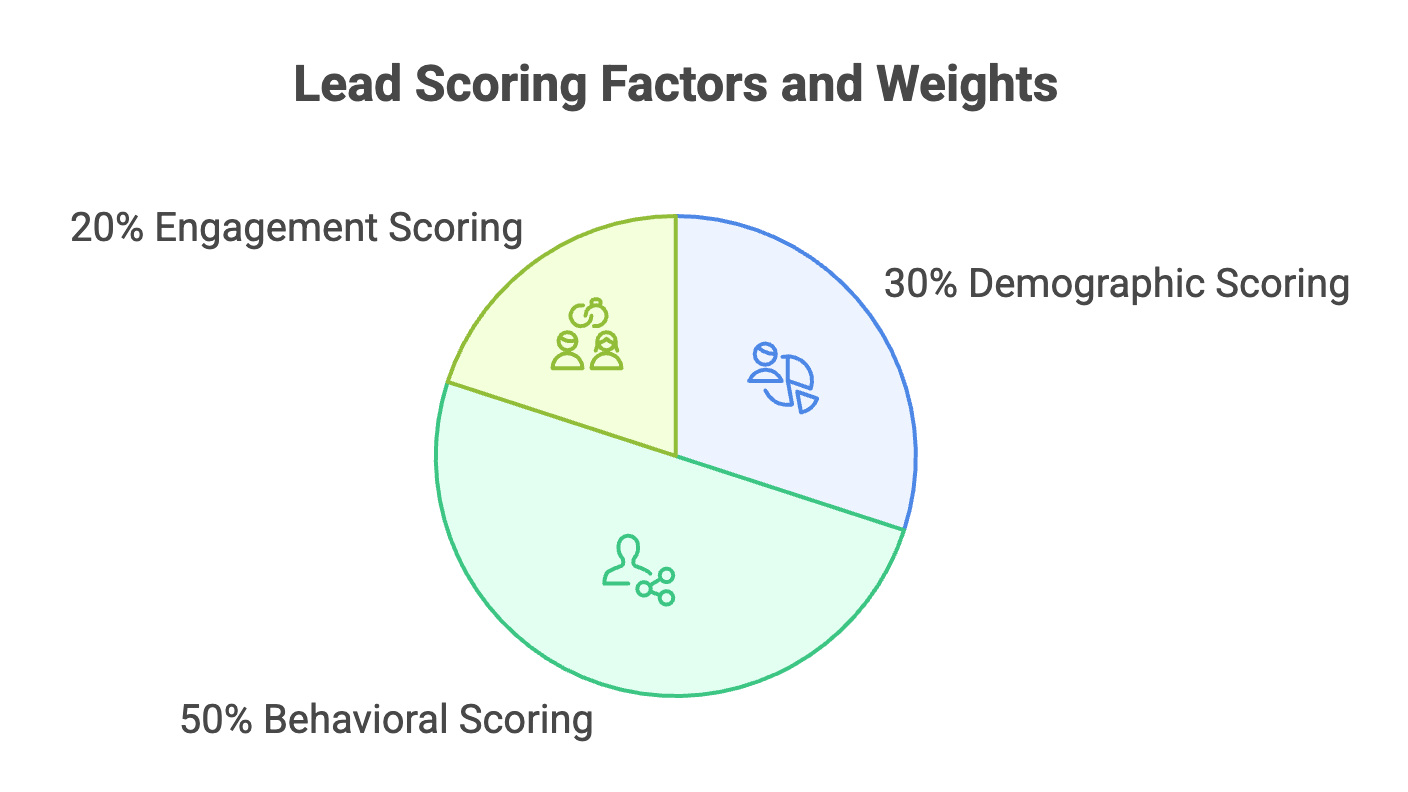
Implementation Steps:
- Analyze your closed-won deals to identify common characteristics
- Assign point values to each scoring factor
- Set scoring thresholds for different priority levels
- Test and refine scoring criteria based on results
- Train your team on how to use scores for prioritization
Strategy 2: Create Stage-Specific Content
Each pipeline stage requires different types of content to move prospects forward effectively.
Content Mapping by Stage:
Lead Generation Stage in the sales pipeline metrics:
- Blog posts and educational content
- Webinars and virtual events
- Social media campaigns
- SEO-optimized landing pages
Qualification Stage:
- Industry-specific case studies
- ROI calculators and assessment tools
- Competitor comparison guides
- Problem identification frameworks
Discovery Stage:
- Needs assessment templates
- Industry benchmark reports
- Best practices guides
- Implementation checklists
Presentation Stage:
- Custom demo scripts
- Proof of concept templates
- ROI projection models
- Success story case studies
Proposal Stage:
- Proposal templates and pricing guides
- Implementation timelines
- Service level agreements
- Reference customer contacts
Closing Stage:
- Contract templates and legal resources
- Implementation planning documents
- Team introduction materials
- Quick start guides
📚 Content Management: Olqan’s document management system organizes all your sales content by pipeline stage, ensuring your team always has the right materials at the right time.
Strategy 3: Automate Pipeline Management
Automation eliminates manual tasks and ensures consistent follow-up throughout your pipeline.
Essential Automation Workflows:
Lead Assignment Automation:
- Route leads based on territory, industry, or lead score
- Balance workload across team members
- Escalate high-priority leads immediately
- Notify sales reps of new assignments
Follow-Up Automation:
- Schedule automatic follow-up reminders
- Send stage-appropriate email sequences
- Trigger actions based on prospect behavior
- Alert managers to stalled deals
Data Management Automation:
- Update contact and company information
- Sync data between marketing and sales tools
- Track engagement across all touchpoints
- Generate activity reports and dashboards
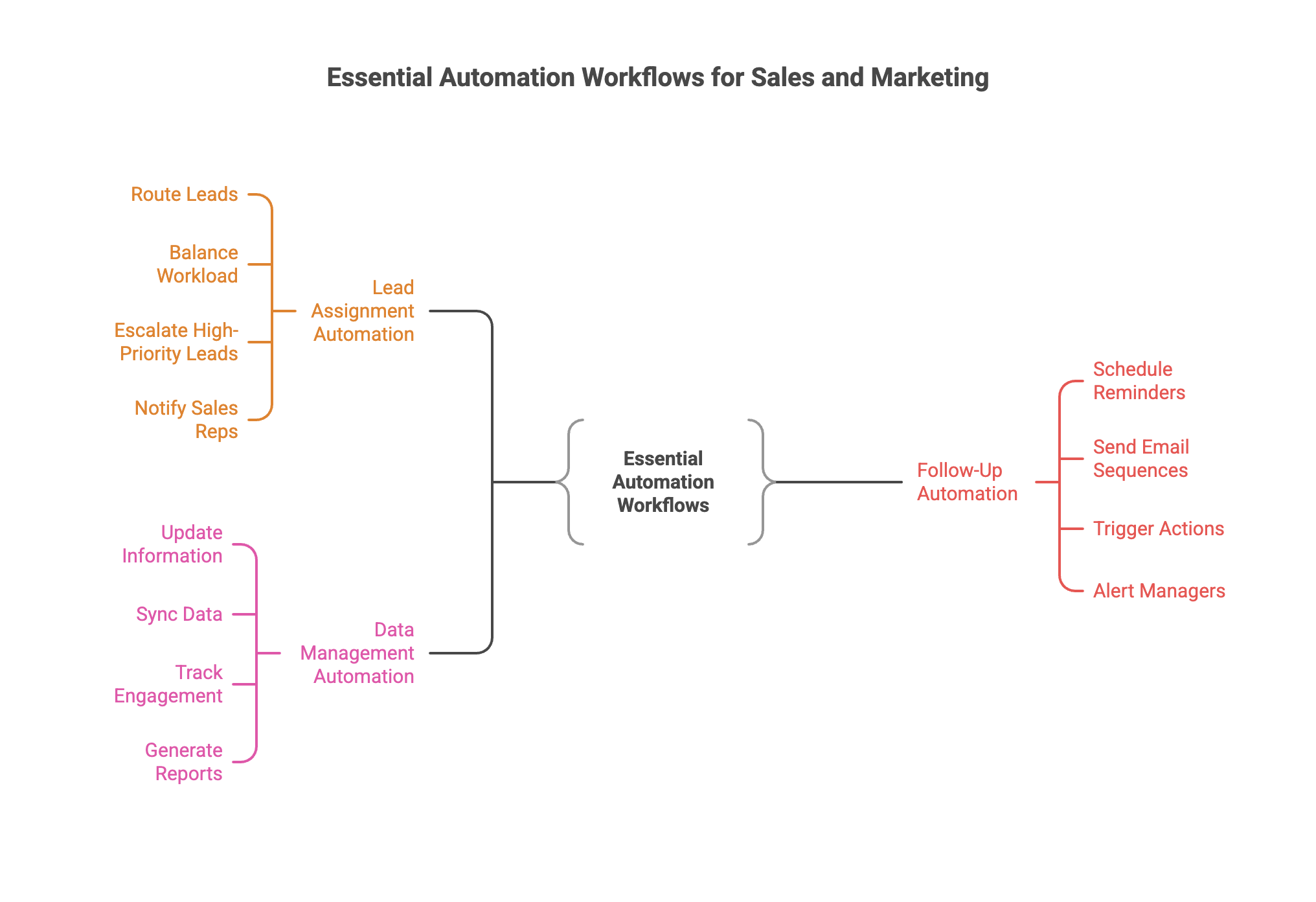
Strategy 4: Implement Pipeline Velocity Optimization
Pipeline velocity measures how quickly deals move through your sales process. Optimizing velocity increases revenue without requiring more leads.
Velocity Formula: Pipeline Velocity = (Number of Deals × Average Deal Size × Win Rate) ÷ Length of Sales Cycle
Velocity Optimization Tactics:
Increase Deal Volume:
- Improve lead generation and qualification
- Expand into new markets or segments
- Develop referral and partnership programs
- Optimize marketing campaigns for quality leads
Increase Average Deal Size:
- Bundle products and services
- Introduce premium offerings
- Focus on enterprise customers
- Implement value-based pricing
Improve Win Rate:
- Better qualification processes
- Enhanced discovery and needs analysis
- Improved proposal and presentation skills
- Stronger competitive positioning
Reduce Sales Cycle Length:
- Streamline decision-making processes to optimize your sales efforts.
- Provide faster responses to questions
- Eliminate unnecessary pipeline stages
- Improve sales team efficiency
Strategy 5: Develop Competitor-Specific Strategies
Understanding your competitive landscape helps you position effectively at each pipeline stage.
Competitive Intelligence Framework:
Competitor Analysis:
- Product/service feature comparison
- Pricing and packaging strategies
- Strengths and weaknesses assessment
- Customer satisfaction and retention rates
Battlecard Development:
- Key differentiators and value propositions
- Common competitor objections and responses
- Competitive replacement strategies
- Win/loss analysis insights
Stage-Specific Competitive Strategies:
- Discovery: Ask questions that highlight competitor weaknesses
- Presentation: Emphasize your unique advantages
- Proposal: Include competitive advantage summaries
- Closing: Address competitive concerns directly
Pipeline Analytics and Optimization
Data-driven pipeline management separates high-performing sales teams from the rest. Here are the key metrics to track and optimize.
Essential Pipeline Metrics
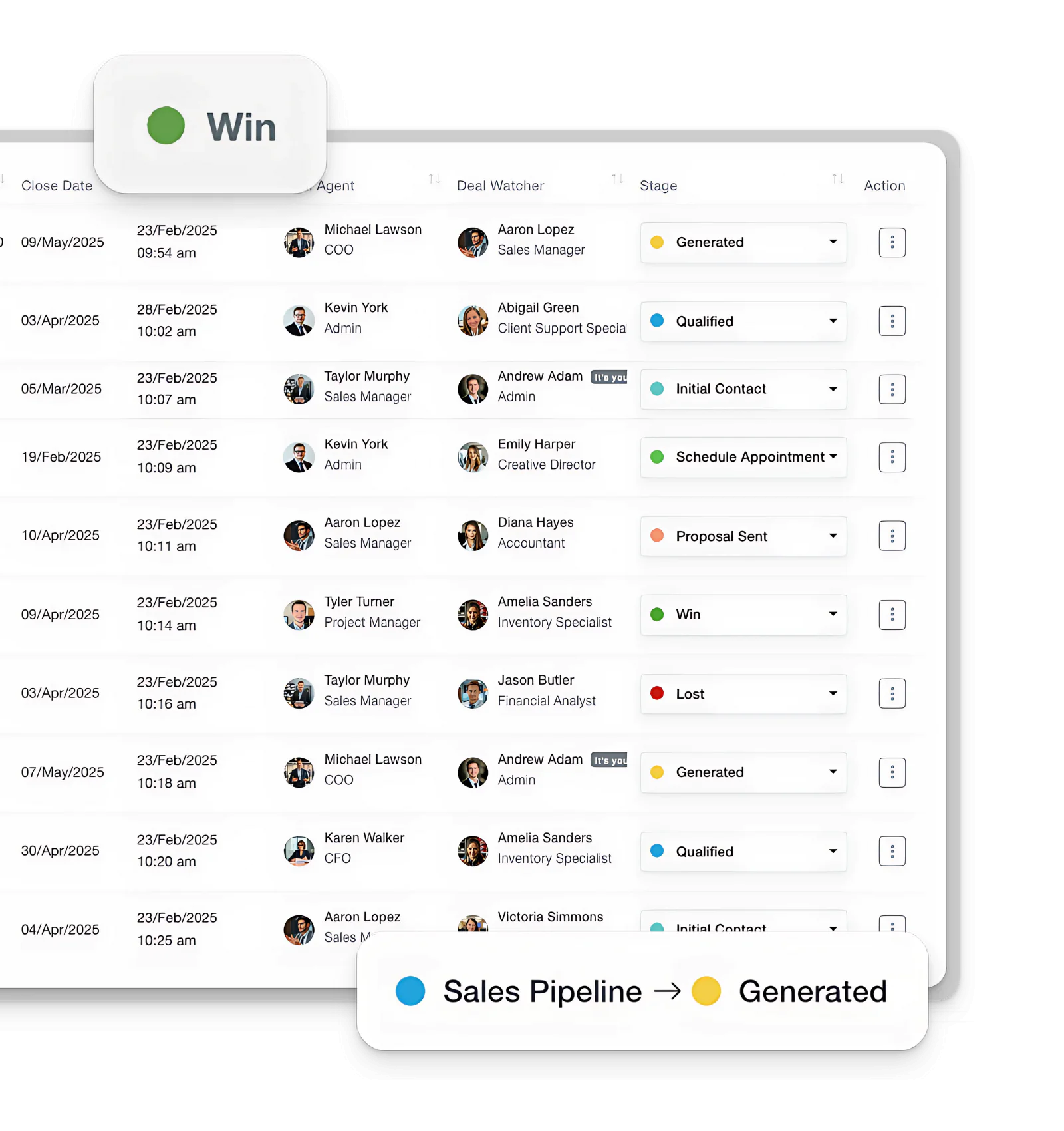
Conversion Rate Metrics:
- Overall pipeline conversion rate (leads to customers)
- Stage-to-stage conversion rates
- Conversion rates by lead source
- Conversion rates by sales rep
- Conversion rates by prospect segment
Velocity Metrics:
- Average time in each stage
- Overall sales cycle length
- Pipeline velocity trends
- Stage bottleneck identification
Volume Metrics:
- Total pipeline value
- Number of deals by stage
- New leads added per period
- Pipeline coverage ratio (pipeline value vs. quota)
Quality Metrics:
- Average deal size
- Win rate by competitor
- Customer lifetime value
- Sales team activity levels
Pipeline Health Assessment
Healthy Pipeline Indicators:
- 3:1 pipeline coverage ratio minimum
- Consistent velocity across time periods
- Balanced stage distribution (not too top or bottom heavy)
- High-quality lead sources dominating pipeline
- Predictable conversion rates between stages
Warning Signs:
- Declining conversion rates at any stage
- Increasing sales cycle length
- Heavy concentration in early stages
- Inconsistent rep performance
- Poor lead quality indicators
Continuous Optimization Process
Monthly Pipeline Reviews:
- Analyze conversion rates by stage and identify trends
- Review sales cycle length and identify bottlenecks
- Assess pipeline quality and lead source performance
- Identify coaching opportunities for individual reps
- Update processes based on performance data
Quarterly Strategic Reviews:
- Evaluate overall pipeline strategy effectiveness
- Assess competitive positioning and market changes
- Review pricing and packaging optimization opportunities
- Analyze customer feedback and satisfaction scores
- Plan process improvements and team training
Technology Stack for Pipeline Success
The right technology stack can dramatically improve your pipeline performance. Here’s what you need:
Core CRM Requirements
Essential CRM Features:
- Visual pipeline management with drag-and-drop functionality
- Automated lead scoring and qualification
- Email and calendar integration
- Mobile access for field sales teams
- Customizable fields and stages
- Reporting and analytics capabilities
Advanced CRM Features:
- AI-powered insights and recommendations
- Automated workflow creation
- Integration capabilities with marketing tools
- Revenue forecasting and pipeline analysis
- Customer success tracking
- Team collaboration features
🛠️ Complete CRM Solution: Olqan’s Sales Hub provides everything you need for pipeline management, from lead capture and scoring to deal closing and customer success all integrated with your project management and business operations.
Integration Considerations
Marketing Integration:
- Lead handoff processes
- Marketing qualified lead definitions
- Campaign performance tracking
- Content performance analytics
Customer Success Integration in the entire sales process:
- Seamless customer onboarding
- Expansion opportunity tracking
- Customer health scoring
- Churn prevention workflows
Finance Integration:
- Revenue recognition processes
- Commission tracking
- Contract management
- Payment processing
Implementation Roadmap: Building Your High-Converting Pipeline
Ready to transform your sales process? Follow this proven implementation roadmap:
Phase 1: Foundation (Weeks 1-2)
Week 1: Assessment and Planning
- Audit current sales process and identify gaps
- Analyze historical data to establish baseline metrics
- Define ideal customer profile and buyer personas
- Map current pipeline stages and conversion rates
Week 2: Framework Design
- Design new pipeline stages using the 7-stage framework
- Create stage definitions and advancement criteria
- Develop qualification frameworks (BANT, etc.)
- Plan technology requirements and integrations
Phase 2: Implementation (Weeks 3-6)
Week 3-4: System Setup
- Configure CRM system with new pipeline stages
- Set up automation workflows for lead management
- Create sales content for each pipeline stage
- Develop tracking and reporting dashboards
Week 5-6: Team Training
- Train sales team on new pipeline process
- Implement lead scoring and qualification criteria
- Launch pilot program with select team members
- Gather feedback and make initial adjustments
Phase 3: Optimization (Weeks 7-12)
Week 7-8: Process Refinement
- Analyze pilot results and conversion data
- Refine stage definitions and advancement criteria
- Optimize automation workflows based on usage
- Expand rollout to full sales team
Week 9-12: Performance Optimization
- Monitor key metrics and identify improvement areas
- Implement advanced strategies (velocity optimization, competitive positioning)
- Conduct regular pipeline reviews and coaching sessions
- Establish ongoing optimization processes
Phase 4: Scale and Improve (Month 4+)
Ongoing Activities:
- Monthly performance reviews and metric analysis
- Quarterly strategy assessments and adjustments
- Continuous team training and skill development
- Technology upgrades and new feature adoption
Common Pipeline Mistakes to Avoid
Learn from others’ mistakes and avoid these common pitfalls:
1. Too Many Pipeline Stages
Mistake: Creating 10+ stages that confuse rather than clarify
Solution: Stick to 5-7 meaningful stages that represent real progression
2. Unclear Stage Definitions
Mistake: Vague criteria that allow subjective interpretation
Solution: Create specific, measurable advancement criteria for each stage
3. Ignoring Lead Quality
Mistake: Focusing on lead quantity over quality
Solution: Implement robust qualification processes and lead scoring
4. Inconsistent Follow-Up
Mistake: Leaving follow-up to individual initiative
Solution: Automate follow-up sequences and set clear activity requirements
5. Poor Data Hygiene
Mistake: Allowing inaccurate or incomplete data to accumulate
Solution: Establish data entry standards and regular cleanup processes
6. No Regular Pipeline Reviews
Mistake: Setting up pipeline and never reviewing performance
Solution: Implement weekly deal reviews and monthly pipeline analysis
Real-World Success Stories
Case Study 1: SaaS Startup – 40% Conversion Improvement
Challenge: A B2B SaaS company had a 12% lead-to-customer conversion rate and unpredictable sales forecasting.
Solution: Implemented 7-stage pipeline with automated lead scoring and stage-specific content.
Results:
- Increased conversion rate from 12% to 17% (42% improvement)
- Reduced sales cycle from 90 to 65 days
- Improved forecast accuracy from 60% to 87%
- Increased average deal size by 23%
Key Success Factors:
- Rigorous lead qualification process
- Stage-specific content and objection handling
- Automated follow-up sequences
- Regular pipeline reviews and coaching
Case Study 2: Professional Services – 60% Pipeline Velocity Increase
Challenge: A consulting firm struggled with long sales cycles and low win rates due to poor qualification.
Solution: Redesigned pipeline with emphasis on early qualification and value demonstration.
Results:
- Increased pipeline velocity by 60%
- Improved win rate from 22% to 34%
- Reduced time-to-close from 120 to 75 days
- Increased team productivity by 45%
Key Success Factors:
- Implemented BANT qualification framework
- Created industry-specific case studies
- Developed ROI calculators for value demonstration
- Established clear pipeline stage gates
Case Study 3: Manufacturing Company – 25% Revenue Growth
Challenge: A B2B manufacturer had an unstructured sales process with no visibility into pipeline health.
Solution: Built systematic pipeline with CRM implementation and sales process standardization.
Results:
- Achieved 25% revenue growth in first year
- Increased deal size by 18% through better discovery in the sales pipeline metrics.
- Improved customer retention from 78% to 91%
- Reduced sales team turnover by 40%
Key Success Factors:
- Comprehensive discovery process training
- Implementation of cross-selling and upselling strategies
- Customer success tracking and expansion planning
- Data-driven decision making
🏆 More Success Stories: Discover how businesses across industries are transforming their sales performance with Olqan’s integrated sales and CRM solutions.
Your Action Plan: Building Your High-Converting Pipeline
Ready to build a sales pipeline that converts 30% more leads? Here’s your step-by-step action plan:
This Week:
- Audit your current sales process and identify major gaps
- Calculate baseline metrics (conversion rates, cycle length, deal size)
- Define your ideal customer profile using existing customer data
- Choose your technology stack and begin setup process
Next 30 Days:
- Implement the 7-stage pipeline framework with clear advancement criteria
- Train your sales team on new processes and qualification methods
- Set up basic automation for lead routing and follow-up
- Begin tracking key metrics and establishing reporting cadence
Next 90 Days:
- Optimize conversion rates at each pipeline stage
- Implement advanced strategies like lead scoring and competitive positioning
- Develop stage-specific content and sales enablement materials
- Establish regular pipeline review and optimization processes to maximize sales effort.
Related Reading
📖 Master Your Sales Process:
- Why All-in-One Business Management Software is a Game-Changer for Small Businesses
- The Complete Guide to Scaling Your Small Business Operations
- Business Process Optimization Strategies That Increase Efficiency
- Project Management Methodologies Compared: Which One Fits Your Business?
Conclusion: Your Path to Pipeline Success
Building a high-converting sales pipeline isn’t about luck or natural sales talent—it’s about creating a systematic, data-driven process that guides prospects naturally toward purchase decisions.
The 30% conversion improvement we’ve discussed throughout this article isn’t just possible, it’s inevitable when you implement these strategies consistently:
Key Takeaways:
- Structure matters – Clear pipeline stages with specific advancement criteria
- Qualification is critical – Focus on lead quality over quantity
- Automation amplifies – Technology handles routine tasks so humans focus on selling
- Data drives decisions – Regular analysis and optimization compound results
- Consistency wins – Systematic processes outperform individual heroics
Remember, building a high-converting pipeline is a marathon, not a sprint, and requires solid sales strategies. Start with the foundations, implement systematically, and optimize continuously based on data and results.
🚀 Ready to build your high-converting sales pipeline? Discover how Olqan’s Sales Hub provides everything you need CRM, automation, analytics, and team collaboration—in one integrated platform designed for growing businesses.
FAQs on Building a Sales Pipeline That Converts 30% More Leads
What is a sales pipeline?
A sales pipeline is a visual representation of the sales process, illustrating the stages that potential leads go through before becoming customers. It helps sales teams track and manage their sales opportunities, ensuring that they can effectively convert leads into sales. A well-structured sales pipeline enables businesses to identify where prospects are in the sales cycle and what actions are needed to close deals.
How can I improve my sales conversion rate?
Improving your sales conversion rate involves refining your lead generation strategies and ensuring that your sales team effectively engages with prospects. Implementing best practices such as lead qualification, nurturing relationships, and utilizing a CRM system can significantly enhance your conversion rate by ensuring that your team focuses on qualified leads that are more likely to convert.
What are some effective sales strategies for B2B businesses?
Effective sales strategies for B2B businesses include personalized outreach, leveraging social selling, utilizing content marketing to educate prospects, and maintaining a healthy pipeline through consistent lead generation efforts. Additionally, establishing relationships and trust with potential leads can lead to more successful sales opportunities.
How does lead qualification impact the sales process?
Lead qualification is critical to the sales process as it helps sales representatives identify which prospects are most likely to convert. By focusing on sales qualified leads, your sales team can prioritize their efforts and allocate resources more effectively, ultimately boosting sales and improving the overall efficiency of your sales cycle.
What are the key sales activities to track in a CRM system?
Key sales activities to track in a CRM system include lead interactions, follow-up tasks, sales opportunities, and the progression of leads through the sales pipeline. Monitoring these activities enables sales managers to analyze sales data and identify areas for improvement, helping teams to refine their sales strategies and keep your sales performance at a high level.
How can I build a strong sales pipeline?
Building a strong sales pipeline requires a systematic approach to managing leads and opportunities. This includes defining clear stages of the sales cycle, ensuring that your sales team follows up on leads promptly, and regularly reviewing sales data to identify bottlenecks. Additionally, incorporating feedback from your sales representatives can help you adapt your strategies to better meet the needs of potential leads.
What role does sales training play in effective sales?
Sales training plays a crucial role in effective sales by equipping your sales team with the skills and knowledge needed to engage prospects effectively. Regular training sessions help sales representatives understand the best practices for lead qualification and conversion tactics, which can lead to improved sales performance and a higher conversion rate.
How can I keep my sales team motivated to achieve a higher conversion rate?
Keeping your sales team motivated involves setting clear goals, providing ongoing training, and recognizing achievements. Implementing incentives for reaching targets, fostering a collaborative environment, and regularly sharing success stories can boost morale and encourage your team to strive for a higher conversion rate, ultimately leading to more successful sales outcomes.


